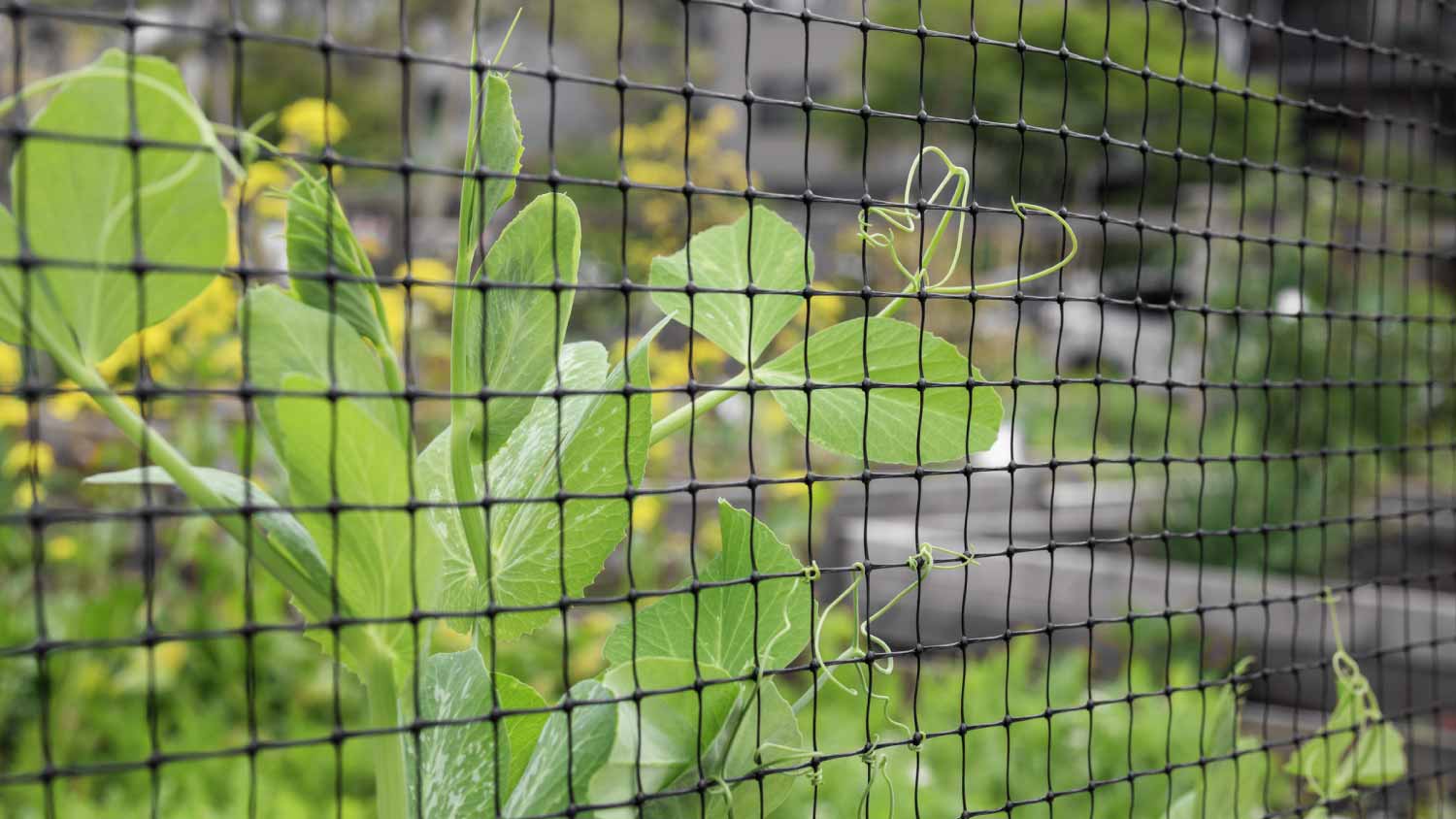
Whether you have bugs, bats, or rodents invading your home, you’ll want to contact an exterminator quickly. Find out how much pest control costs in Columbus, OH.
Time to tell Thumper he overstayed his welcome


It’s essential to understand local wildlife regulations before attempting to remove rabbits from your yard.
Rabbit-proof fencing can be effective, but it’s labor-intensive and time-consuming to install.
A wildlife control expert will assess your property and come up with a rabbit removal strategy that’s both effective and humane.
You are in a battle against the cutest invasion ever: rabbits. Yep, those fluffy, twitchy-nosed creatures that could win a Most Adorable award any day. But, if they are throwing a bunny party in your yard—a complete fuzzy takeover—what can you do?
Don't panic. When it comes down to how you get rid of rabbits, many solutions balance the need to protect your property while respecting wildlife. Let's hop to it.
Before attempting any rabbit management strategy, it's crucial to understand their behavior and habits. Rabbits are primarily nocturnal. They are typically active during dawn and dusk and prefer areas with ample cover. They also have a keen sense of smell and taste, which helps them find the best yards in town for their rabbity behavior.
If your yard is home to apples, hay, leafy vegetables, herbs, tomatoes, berries, and even fresh tree bark, they act like magnets for bunnies. Rabbits are also drawn to certain fragrances, including dropping from other bunnies, sweet-smelling flowers like roses, and the aroma of warm, damp soil.
Finally, gardens with tall grass, dense shrubs, and other hiding spots offer rabbits security. These areas become attractive habitats for them as they can feed and rest away from prying eyes.
If you’re trying to live rabbit-free, habitat modification is the first step in your journey. This involves making your yard a little less inviting for these adorable critters. Here are practical steps to create an environment that discourages rabbits from making themselves at home.
Rabbits thrive in dense vegetation, so keep their hiding spots to a minimum. Regularly trim bushes and shrubs to reduce cover opportunities. Maintaining a consistent mowing routine also helps remove potential hiding places in tall grass. Additionally, be sure to eliminate areas with dense weeds.
Certain plants are less appealing to rabbits. Anything heavily textured or spikey—like the yucca plant, holly trees, and turpentine bushes—is a deterrent. Some rabbits also dislike the scent of lavender and are not fans of daffodils because they have a toxic compound called lycorine.
Loud noises can easily startle rabbits, and wind chimes can initially be used to deter them from gardens. Nevertheless, wind chimes might not maintain their effectiveness over an extended period if rabbits get used to the sound.
If rabbits are persistent, consider installing rabbit-proof fencing around your yard. Fencing should be at least three feet high. Here’s a bit more about your fencing options.

A study by The Connecticut Agricultural Experiment Station revealed that fences are the most effective method for keeping rabbits out of your yard. Using rabbit-proof mesh, you can create a physical barrier that keeps Bugs and his pals from entering.
First, determine the area you want to protect. It could be a garden, yard, or other specific spot. Then, mark the locations where you will install the fence posts. Space them according to the length of your fencing panels, usually around four to six feet apart.
Clear the area of any debris, rocks, or vegetation that might interfere with the installation. Ensure the ground is level and even.
The posts can be metal, wood, or vinyl. The posts should be two feet longer than the desired fence height. Use a post-hole digger or auger to dig holes for your fence posts—the holes should be two feet deep. Place the posts in the holes and fill them with soil or concrete for more stability. Make sure the posts are straight and aligned.
Grab your mesh fencing material. The opening should be tiny, typically around one inch or smaller. Unroll the mesh fencing along the perimeter of the posts. Start at one end and work your way to the other.
Secure the mesh to the posts using nails, screws, wire, or zip ties. Ensure the mesh is taut and adequately attached to prevent rabbits from squeezing through any gaps. Ensure your fencing is about three feet high, and trim any excess material.
It is essential to note that rabbits burrow. To keep bunnies from digging under your new fence, you have a few options.
Place heavy pavers or gravel along the fence line. Bunnies prefer softer soil for burrowing, so creating a hard surface can deter their digging attempts.
Dig a trench along the fence's perimeter and bury hardware cloth (a sturdy wire mesh) in the ditch before backfilling. Extend the hardware cloth six to 12 inches below the ground and curve it away from the fence. This will create an underground barrier rabbits can't get through.
Attach an L-shaped barrier made of hardware cloth to the bottom of your fence, with one part of the L lying flat on the ground and the other extending away from the fence. Bury the horizontal component in the ground. The Humane Society says this is an excellent barrier for digging animals.

Commercial repellents can add another layer of protection if needed. Here are some tips for best use.
Select a commercial product that suits your needs. You will find a range of sprays and granule repellents.
Before applying any repellent, carefully read and follow the manufacturer's instructions on the label.
If using spray repellent, apply evenly on surfaces that rabbits are targeting. Concentrate on areas where they are feeding or digging. You will need to use it fairly often and reapply after it rains.
For granule repellents, spread them around the perimeter of the part of your yard you want to protect. Doing so can form a barrier that rabbits are less likely to cross.
Keep an eye on whether the repellent is deterring rabbits. If not, you might need to switch to a different type or apply more often.
Repellents work best alongside other strategies, such as fencing and habitat modifications, to create a comprehensive defense.
Creating a decoy garden is a clever way to steer rabbits away from your cherished plants. It offers rabbits an appealing alternative space while safeguarding your property. The first step is protecting the areas you don't want rabbits inhabiting using the methods shared above.
Afterward, choose an easily accessible spot for your decoy garden and populate it with rabbit-friendly plants like clover, grasses, berries, and herbs. Make it natural and comfortable, with features like a water source and soft soil for digging. Regular upkeep maintains its allure, reducing rabbits' interest in your garden and yard.
Wildlife removal from your premises typically costs between $190 and $585, averaging around $384. Various factors influence your grand total, including the size of the rabbit population and your removal or extermination methods.
Remember, some rabbit species are going through population declines, and some have federal protection. So, humane methods are the way to go when dealing with your rabbit issue. Sure, some types of rabbits are considered pests. However, upholding the ethical treatment of animals is still crucial and maintains the ecosystem’s delicate balance.
Before taking any steps, it is advisable to consult local wildlife authorities, conservation groups, or local pest control professionals. They can guide you on effective and ethical approaches tailored to your region, ensuring the well-being of both animals and the environment.
Deciding whether to handle rabbit control yourself or enlist a professional depends on the seriousness of the situation and your familiarity with effective methods.
If you're dealing with a manageable rabbit population and are well-versed in humane control techniques, attempting it on your own could be worth considering.
However, for larger infestations or if you are uncertain about the best approach, opting for a professional ensures expertise and adherence to local regulations, leading to more successful and ethical outcomes.
Trapped animals can be dangerous, no matter their size. Do not attempt to handle them—call in a pro for safe removal instead.
Rabbits are among the other small animals that make up about 25% of wildlife control visits. Raccoons, squirrels, skunks, and possums are much more common, accounting for over 50% of pest control treatments combined. Other animals, like moles, deer, and groundhogs, are also commonly treated by pros.
From average costs to expert advice, get all the answers you need to get your job done.

Whether you have bugs, bats, or rodents invading your home, you’ll want to contact an exterminator quickly. Find out how much pest control costs in Columbus, OH.

If you discover a wasp nest near your home, you’ll want to remove it ASAP. Learn wasp nest removal cost factors in this guide.

How much does a gnat exterminator cost? The answer depends on the method of treatment and the level of infestation. Find out what plays into your budget.

While some rodent-borne illnesses are a thing of the past, rats can still cause serious illness. Read up on four rat-related diseases and how to avoid them.

Bats love to roost in your attic, walls, and throughout your property. Here are some tips on safely and humanely removing them from your home.

Roaches in your cabinets can make your life hard, and they’re difficult to eliminate. Read on to learn how to get rid of cockroaches in your kitchen cabinets.